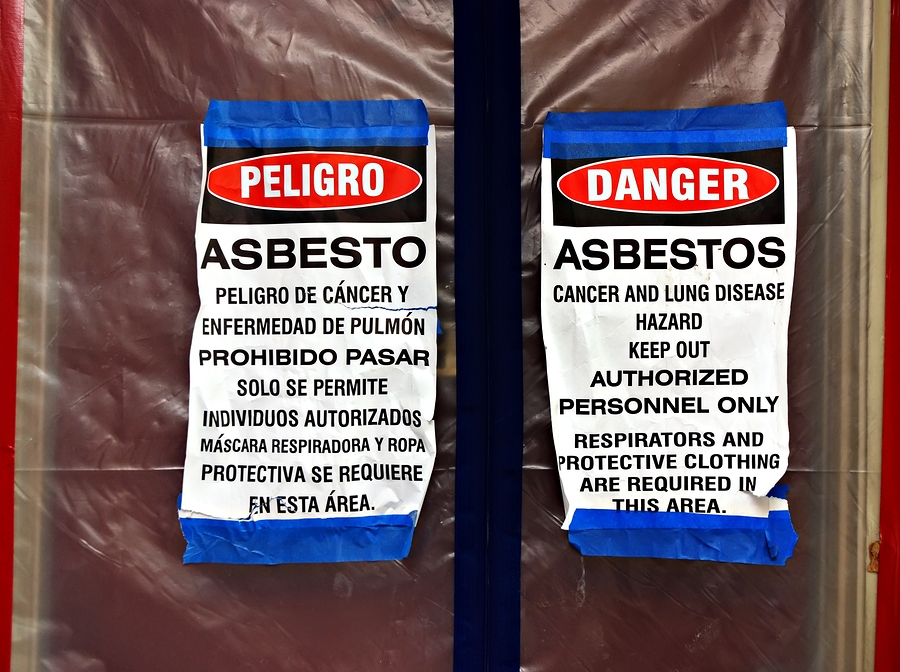 You’ve probably heard all about the dangers of asbestos and its link to lung disease, mesothelioma, and other cancers. You may have also heard conflicting information about whether asbestos is actually a threat to you in your home. To better understand the risks asbestos poses to you and your family, you will want to know a little bit about the nature of the material, its presence in modern building materials, and what to do if you think you might be exposed.
You’ve probably heard all about the dangers of asbestos and its link to lung disease, mesothelioma, and other cancers. You may have also heard conflicting information about whether asbestos is actually a threat to you in your home. To better understand the risks asbestos poses to you and your family, you will want to know a little bit about the nature of the material, its presence in modern building materials, and what to do if you think you might be exposed.
What is Asbestos?
Asbestos is a naturally occurring fibrous material found in deposits around the globe. The properties of asbestos include a strong resistance to most chemicals, acids, water, and heat, as well as being incredibly strong, flexible, insulating, and non-reactive.
Why Should I Be Concerned?
Asbestos was classified as a human carcinogen in 1987, not long after OSHA and the EPA began regulating the use and manufacturing of asbestos materials in the late 1970s for asbestos-related illnesses, particularly in asbestos workers. Exposure to asbestos is primarily through inhalation of airborne fibers, which will permanently penetrate the lung tissue causing scarring and leading to lung disease that can develop as much as 10 – 60 years after exposure. Asbestos is now known to be directly linked to the following diseases:
- Lung Cancer
- Mesothelioma
- Asbestosis
- Other Cancers, including the Larynx and the Ovaries
Although the risk of developing an asbestos-related disease is directly related to the length and concentration of exposure, the IARC has concluded that there is no safe level of exposure.
A Brief History of Asbestos
At this point you may be asking yourself if asbestos is so dangerous, why does it seem to be so prevalent in our built environment?
It is estimated that nearly 3,000 materials were manufactured using asbestos, with widespread production between 1920 and 1980, peaking in the 1960s. Because the use of asbestos in textile, construction, and building materials was so widespread by the mid-century, there was no simple means to phase out asbestos in manufacturing, even as health risks were realized.
How Do I Know If I’m Being Exposed?
Although asbestos materials have been regulated in the US since the 1970s, certain building materials containing asbestos were allowed to be used well into the 1990s. Also, because asbestos only poses a risk once airborne, it is generally recommended that asbestos material in good condition be left untouched. In fact, the US Consumer Product Safety Commission strongly suggests, “THE BEST THING TO DO WITH ASBESTOS MATERIAL IN GOOD CONDITION IS TO LEAVE IT ALONE!” For this reason, the majority of US homes that were constructed between 1930 and 1980 will still contain asbestos materials today. In addition to US homes, it is estimated that nearly 750,000 public buildings in the US contain asbestos materials.
Asbestos-Containing Materials
The most common uses of asbestos materials in building materials were for fireproofing, insulation, soundproofing, and decoration. The following are examples of common asbestos-containing materials found in homes built prior to 1980:
- Insulation for furnaces, electrical wiring, heating, and piping
- Insulation within walls and ceilings
- Cement asbestos siding and roofing
- Vinyl floor tiles and adhesives
- Textured paint and popcorn ceilings
- Appliances and electrical equipment
Am I at Risk?
Asbestos materials that are friable (meaning easily crumbled) or show signs of deterioration pose the greatest risk of releasing fibers into the air. Remember, asbestos materials in good condition that cannot release fibers into the environment pose no health risks. However, as buildings age, asbestos materials may begin to deteriorate. If you suspect that you have asbestos-containing materials in your home, here are a few pointers to keep you and your family safe:
- Do not touch or agitate asbestos-containing materials. Even slight agitation to brittle materials may release fibers that can remain airborne for long periods of time.
- Inspect suspected asbestos-containing materials frequently, particularly in areas prone to heavy vibration or air flow.
- In the event that you suspect damaged asbestos material, limit access to the area, remove and discard any clothing or materials that may have been exposed, and call a professional.
Asbestos Removal and Renovations
The biggest risk of asbestos exposure is due to aging buildings and renovations. When suspected asbestos-containing material is damaged or present in a building to be renovated, it is important to use a professional that can properly test for the presence of asbestos and safely provide removal or abatement. Before anything begins, it’s a good idea to have an Asbestos Survey done on the building to get an idea of the location, amount, and type of any asbestos-containing materials (ACMs).
Can I Do It Myself?
No. Even testing for asbestos requires careful handling of materials to prevent the release of airborne fiber. In the case that asbestos is found, it is imperative that a professional be used for the safe abatement and removal of all materials in accordance with local, state, and federal regulations. There are often many solutions for dealing with asbestos materials including both removal and encapsulation. A professional will know how to properly handle and dispose of asbestos-containing material as he/she is properly trained in avoiding and eliminating risk of asbestos exposure during the removal process.
If you have any questions or concerns about asbestos, please feel free to contact us at any time! We’d be happy to answer any of your questions.
